The Best Multitrack Recorder for Sound Production 2024
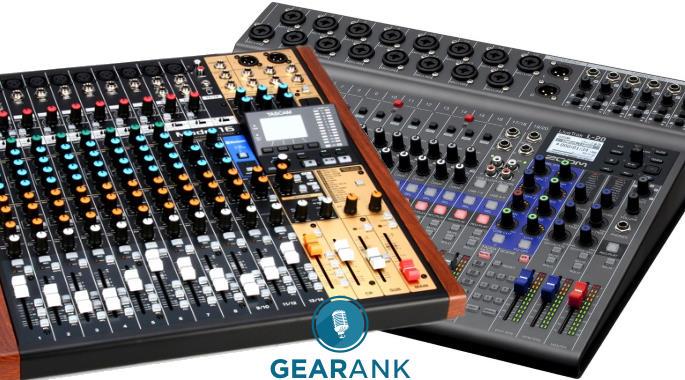
Author & Contributors
Raphael Pulgar
I've been an audio engineer for 20 years specializing in rock and metal recordings. I also play guitar and produce original music for my band and other content creators.
8 to 10 Tracks
TASCAM DP-008EX
Cons
- Slow export speed
- Minor GUI glitches during exporting
- Housing may introduce handling noise to recordings
Pros
- Very good reverb and tone control
- Simple and logically structured menu navigation
- Built-in mics are adequate
The TASCAM DP-008EX is an 8-track digital recorde that can record music or sound on the go. It's easy to carry and can fit in a small bag or pocket. You can power it with four AA batteries, which will last several hours.
This device has eight tracks that you can use to record different sounds at once. It has two microphones built-in that can record sound from all directions. It also has two inputs that you can use to connect external microphones for better sound quality.
Using the TASCAM DP-008EX is very easy. You don't need to be an expert to figure out how to use it. You can only record two sounds at a time, but it's perfect for beginners who want to learn how to record music. You can also use it with a computer to mix and edit your recordings.
The sound quality is excellent, and the built-in microphones work well. You can use external microphones with the device if you need even better sound quality. The batteries last for a long time - about 5 to 7 hours - and you can even use phantom power to power external microphones.
However, exporting your recordings might take a little time, and some features are only available for recording rather than mixing.
Overall, the TASCAM DP-008EX is an excellent choice for people who want to record music or sound while on the go. It's easy to use and has good sound quality.
If you want the best portable multitrack recorder, then this is for you.
Specifications
- Simultaneous recording tracks: 2 stereo or mono tracks
- Tracks playback/mix simultaneously: 8 mono
- Virtual tracks: 8 tracks
- Inputs: 2 x XLR, 1 x 1/4" line, 1 x 1/4" line/DI
- Outputs: 2 x RCA line, 1 x 1/8" stereo headphone
- Sample rate: 44.1kHz
- Bit rate: 16-bit
- On-board effects: 4 types of reverbs (Hall1/2, Room, Studio, Plate1/2), compressor, exciter and de-esser
- Effects send: Internal
- USB audio interface: Multitrack
- Storage medium: Up to 32GB SDHC (2GB SD card included)
- Export tracks to computer: Yes
12 Tracks
Zoom LiveTrak L-12
Cons
- No solo and polarity buttons
Pros
- Full-featured production capabilities
- Great onboard effects
- No-compromise digital mixer functions for live use
Following up on the success of their R series recorders, Zoom released the Livetrak series in 2017 with new features previously unseen on any of their standalone recorder lines.
While the R series is still in production today, the Livetrak series offers an upscale experience and looks more in place in studios. The R series caters more to the "prosumer" market.
It functions threefold as a digital mixer, an audio interface, and a standalone recorder. The Livetrak L-12 is a direct upgrade to the brand's previous R series thanks to its newer preamps and converters.
The onboard effects enable better polish on tracks if used as a primary digital multitrack recording and mixing unit.
Moving onto the cons. The lack of dedicated solo and polarity buttons, standard features on even the most basic mixers, is a critical omission. Both are essential functions for mixing. Filenames are also named similarly and can be confusing when transferring the project to a computer for further mixing.
If you're looking for a jack-of-all-trades multitrack recorder that can help you keep track of rehearsals or live, small-venue events, the Zoom LiveTrak L-12 is a great choice.
Specifications
- Simultaneous recording tracks: 14
- Tracks playback/mix simultaneously: 12. 4 if used as audio interface
- Virtual tracks: 0
- Inputs: 8 x XLR, 2 Stereo 1/4" TRS - Phantom power on 8 channels
- Outputs: 2 x XLR Master Out, 5 x 1/4" TRS Headphone Monitor outs, 2x 1/4" unbalanced LR Monitor out + USB
- Sample rate: 44.1khz, 48khz, 96khz (switchable)
- Bit rate: Up to 24-bit
- On-board effects: 16 onboard effects including delays and reverbs
- Effects send: Internal
- USB audio interface: 14 channels
- Storage medium: USB 2.0
- Export tracks to computer: Yes
| Website | Source | *Rating Value |
| Sound On Sound | Sam Inglis | 94/100 |
Demo
16 Tracks
TASCAM Model 16
Cons
- Has a bit of a learning curve
- Would have been perfect with motorized faders
Pros
- Great routing options
- Hybrid mixing workflow and analog summing a great plus
- Enough inputs for a full band
The Tascam Model 16 expands upon Model 12's features by adding inputs and outputs.
The control room outputs add flexibility for use with larger studios while the additional inputs enable miking up more tracks, especially drums or full band setups.
60mm faders, classic 3 band EQ, inline compression for select channels, and flexible aux and fx routing give a familiar feel for those used to analog mixer workflows. The HDDI Preamps ensure excellent quality captures with low noise.
As with all Model series mixers from Tascam, you can route the audio from your DAW (Digital Audio Workstations) into the mixer and back into the DAW for analog mixing and summing.
The Model 16 strikes a good balance of inputs and portability compared to its 12 and 24 track siblings. One change over model 12 is how the inputs are on top rather than behind. This makes it easier to plug XLR cables in and out.
One thing to note is that there is a steep learning curve, which is expected since it requires people used to digital workflows to adapt to analog workflows and vice versa. Another thing I wish it had is motorized faders so it could function as a full-fledged DAW controller.
The Tascam Model 16 has been gaining more traction as the favored "middle child" of the Model series. Get it if you feel the Model 24 might be too much and the Model 12 might be too restricting.
Specifications
- Simultaneous recording tracks:14
- Tracks playback/mix simultaneously: 8 Mono, 3 stereo
- Virtual tracks: 0
- Inputs:2 x 1/4" (line/Hi-Z), 6 x 1/4" (line), 4 x 1/4" (2 x stereo), 1 x 1/8" (stereo), 1 x Dual RCA Stereo
- Outputs:2 x XLR (main), 2 x 1/4" (control room), 2 x 1/4" (L/R subgroup)
- Sample rate: 48kHz
- Bit rate: 24-bit
- On-board effects: 8 x Channel Compressor, Reverbs, Delay, Chorus, Flanger
- Effects send: Internal
- USB audio interface: Yes
- Storage medium: SD Card Slot, SDHC (4GB-32GB), SDXC (64GB-512GB)
- Export tracks to computer: Yes
| Website | Source | *Rating Value |
| YouTube | Guitar Interactive Magazine | 90/100 |
Demo
20 Tracks
Zoom LiveTrak L-20
Cons
- EQ affects monitor mix
Pros
- Individual monitor mixes great for live performances
- Enough inputs for larger bands
- Solo button added (L-12 does not have it)
The Zoom LiveTrak L-20 is Zoom's flagship Multitrack Recorder / Digital Mixer hybrid. It features functionality more akin to dedicated digital Mixing Consoles while balancing multitrack recorder and mixer functionality.
The L-20 also adds a solo button for each channel- a feature missing on the L-12.
One feature that stands out is the ability to provide six personalized headphone mixes while recording. This is a boon to bands and singers that need individual mixes on their monitors. This makes it an excellent live recording mixer for venues and production studios.
Note that the EQ channel also affects the monitors. Front-of-house (FOH) mixes going out through the monitors is usually a recipe for feedback. There might be trouble in finding a compromise between having a good audience mix and a good monitor mix.
The LiveTrak L-20 is excellent for recording and monitoring live sessions, which are increasingly popular as YouTube content. The linked channel EQ for the FOH and monitor mix may be better for live sound. For your rehearsal space, studio, or radio station, the LiveTrak L-20 is a handy tool for capturing performances.
Specifications
- Simultaneous recording tracks: 22
- Tracks playback/mix simultaneously: 20
- Virtual tracks: 0
- Inputs: 16 x XLR/TRS combo jacks, 2 x Stereo Line in
- Outputs: 2 x XLR Master out, 2 x TRS phone jacks Monitor speaker out, 6 x Headphone monitor mix out, 1 x Headphone out
- Sample rate: 44.1/48/96 kHz
- Bit rate: 16/24-bit, mono/stereo
- On-board effects: 20 Types of Reverb, Delay and Modulation
- Effects send: 2
- USB audio interface: 22 Channels In, 4 Channels out
- Storage medium: SDHC/SDXC
- Export tracks to computer: Yes
| Website | Source | *Rating Value |
| Sound On Sound | Sam Inglis | 90/100 |
Demo
24 Tracks
TASCAM DP-24SD
Cons
- Only one effect at a time per track limits workflow
- Need to bounce to virtual tracks to use more than 1 effect
Pros
- Familiar workflow a nice mix between DAW and digital mixer
- Included effects a good enough substitute for DAW plugins
- Decent amp simulations
The TASCAM DP-24SD is designed to be a standalone audio workstation. While this means that it does not offer any DAW controller or USB audio interface features, the design approach allows you to do all of your music production onboard. Also, it lets you export tracks to your computer via USB.
It also features a complete suite of internal effects, 24-track (simultaneous playback tracks), and 8 takes on virtual tracks ready for compositing.
Going DAW-less usually means leaving behind your VSTs and amp simulations. The Tascam DP-24 has them built in, and they sound decent. The workflow feels like you're working between a mix of a DAW and mixing live music with a digital mixer. Familiarity with both makes the DP-24SD a lot easier to transition to.
One limitation is that you can't simultaneously use more than one dynamic effect on a single track - for example, you can't use the de-esser and compressor or compressor and noise suppression simultaneously on one track. The same applies to time-based effects since you can't have reverb and delay at the same time. You can work around this by utilizing bouncing and virtual tracks, but it would have been better if you didn't have to. Motorized faders would be the icing on the cake but would increase the price.
Overall, this is an excellent all-in-one multitracker/recorder for live performances. It's also good for home studio use. Get it if you want to go DAW-less and enjoy a workflow similar to mixing live with a digital mixer.
Specifications
- Simultaneous recording tracks: 8
- Tracks playback/mix simultaneously: 24
- Virtual tracks: 192 - 8 virtual track per actual track
- Inputs: 8 x Combo XLR/TRS - 1 channel switchable between line and guitar - Phantom power on all 8 inputs
- Outputs: 2 x 1/4" balanced TRS, 2 x RCA unbalanced, 1/4" TRS headphone jack, 1/4" TRS jack for effects send + USB
- Sample rate: 44.1k/48k
- Bit rate: 16/24-bit
- On-board effects: Many including 3-band EQ, reverb, compression, exciter, de-esser, noise suppression, amp models, mastering tools, and more
- Effects send: 2
- USB audio interface: No
- Storage medium: SD/SDHC card - up to 32GB
- Export tracks to computer: Yes via USB
| Website | Source | *Rating Value |
| Sound On Sound | Tom Flint | 80/100 |
Demo / Review
The following review by Andi Picker of the previous model provides an excellent overview of its features and functionality - note that it no longer has a CD burner - you can export to your computer to do that:
32 Tracks
TASCAM DP-32SD
Cons
- Newer recording gear has better optimized workflows
Pros
- Great for larger projects
- Perfect for venues and studios that favor traditional workflows
The TASCAM DP-32SD is designed to be a standalone recording workstation similar to its ancestor, the TASCAM Portastudio Tape recorders. While it does not offer USB recording and DAW control features, it was designed with people used to computerless recording workflows in mind.
The DP-32SD offers a similar experience as recording to tape or early digital recordings where outboard gear is still favored over plugins. So, those familiar with that workflow will feel right at home with the DP-32SD.
However, past the nostalgia and familiarity, it is a slower overall workflow compared to recently released units with a more optimized workflow. Even though the DP-32SD has more available tracks and can handle more extensive projects, the TASCAM Model series is more updated regarding specs and function.
TASCAM's reputation for offering standalone multi track recorders goes back decades. The DP-24SD is a modern take on the old Tascam Portastudios of the past. For artists or performers who require multiple inputs and prefer having the ability to record large projects and mix without using a DAW, the DP-32SD is a perfect choice.
Specifications
- Simultaneous recording tracks: 8
- Tracks playback/mix simultaneously: 32
- Virtual tracks: 256 - 8 virtual track per actual track
- Inputs: 8 x XLR/TRS balanced combo - 1 channel switchable between line and guitar - Phantom power on all 8 inputs
- Outputs: 2x 1/4" balanced TRS, 2 x RCA unbalanced, 1/4" TRS headphone jack, 2x 1/4" unbalanced jack for effects send + USB
- Sample rate: 44.1k/48k
- Bit rate: 16/24-bit
- On-board effects: Many including 3-band EQ, reverb, compression, exciter, de-esser, noise suppression, amp models, mastering tools, and more
- Effects send: 2
- USB audio interface: No
- Storage medium: SD/SDHC card - up to 32GB
- Export tracks to computer: Yes
| Website | Source | *Rating Value |
| Equipboard | _josh_sutton | 100/100 |
| MusicRadar** | Jon Musgrave | 80/100 |
**This review is for the previous version that didn't have an SD card.
Demo
Things to Consider When Buying a Digital Multitrack Recorder
- Take note of the distinction between "Channel" and "Track". Channels refer to your inputs (including the preamps and line inputs) and the accompanying controls (the channel strip). Tracks refer to a recording done in its discrete area on the tape. In the case of digital multitrack recorders, these are your files that are recorded from a specific channel. Over the years, they have been used interchangeably but clarifying the distinction helps to keep you from buying the wrong item. Home studio recorders should have at least 2 tracks, but the more sources you need to record, the channels you'll need.
- When multitrack recording was done on tape machines, you could generally record multiple tracks (on all channels) simultaneously, but it would require a lot of equipment and tape. Digital systems also offer multitrack recording, without requiring a massive amount of equipment. But they are not without limits, the simultaneous recording is limited by the input ports and the processing power of the unit. Make sure the recording system you choose provides enough recording channels for the kind of work you do. A recorder can have 8 simultaneous recording channels but could be capable of recording 16 or more tracks. Make sure you check all the specifications before purchasing.
- If a digital recorder is listed as eight tracks, you can mix a maximum of 8 tracks regardless of how many you can record. Manufacturers list mixing capabilities on the specs, so look closely at this specification.
- Many digital multitrack recorders offer additional virtual tracks, which are very handy because they allow for non-destructive editing. For example, if you have 8 virtual tracks per track, you can do 8 extra takes without 'recording over' previous takes. Alternatively, you might have drums on 8 tracks and bounce them down to 2 tracks to free up tracks for other uses. However, if you need to change that mix later, you'll still have access to the original 8 tracks, which you can reload and remix..
- You won't be able to add plugins, so you'll either want to select one with all the effects you need or one with an external effects send/loop to use additional outboard signal processing.
- You can record on a multitrack recorder and then export your tracks to a computer for additional mixing / editing / processing on a DAW.
- Many models come with additional features such as drum machines or allowing you to use them as a USB audio interface with your computer. Another important feature is built-in stereo microphones for quick yet good-quality recordings.
Channels vs Tracks
Simultaneous Recording Channels
Total Number of Tracks for Mixing
Virtual Tracks
Effects
Export Functions
Additional Features
Which is the Best Budget Multitrack Recorder?
Selecting from the different types of multitrack recorders will need special consideration, especially when working with budget constraints. Since most recorders increase in price, the more inputs you need, you have to consider how many inputs you will use. Music producers working with complex recording process setups will need many more inputs. As a general tip, the best studio recorder to get are those with around 2-4 more inputs than you need. When you have identified how many inputs you need, check our guide, as we have categorized our selections according to the number of inputs and then price.
For small bands that don't need to record simultaneously, the TASCAM DP-008EX is a safe pick with 2 inputs if you don't need it as an audio interface.
Recording multitrack units with fewer inputs requires a different workflow since you won't be able to record your entire ensemble simultaneously. If you need to record multiple sources simultaneously for a band, get one with up to six tracks or more. 12-16 track recorders would be an excellent place to start looking at a slightly higher cost.
Important Note About Digital Multitrack Recorder Memory
Many digital recorders only ship with a 1 or 2 GB SD card installed, and some don't ship with any at all, so you'll probably want to get some bigger SDHC memory cards. They're fairly cheap so you may as well go for the ones with bigger capacities beyond 32GB. You can buy them at a local store or online from Sweetwater.com.
Best Multitrack Recorder Selection Methodology
The first edition was published in 2016. The current edition was published on Feb 22, 2024.
We looked at all multitrack recorders available from major online American music gear retailers, excluding handheld, dedicated podcast and field recorders. We came up with a shortlist of 21 products and entered all of them into our Music Gear Database. We then analyzed forum discussions and reviews by users, owners, and audio engineers and processed that information, which included over 16200 sources, with the Gearank Algorithm to produce the rating scores out of 100 you see above. We selected the highest rated options in each sub-category of track numbers to recommend above. For more information about our methods see How Gearank Works.
About the Author and Contributors
Here are the key people and sources involved in this guide's production - click on linked names for information about their music industry backgrounds.
Lead Author & Researcher
Raphael Pulgar
I've been an audio engineer for 20 years specializing in rock and metal recordings. I also play guitar and produce original music for my band and other content creators.
I'm a big fan of old-school "to tape" recording. Having the option to record without a computer frees up a lot of possibilities especially for live recordings. For permanent setups like bars and venues, having a multitrack recorder that doubles as the house mixer enables you to record live performances to sync up with video footage. A great way to get your venue or event out there since live performances on YouTube tend to get a lot of views. I highly recommend this type of content creation and multitrack recorders make it a lot more convenient to do so.
Contributors
Alden Acosta & Jerome Arcon: Product research.
Jason Horton: Editing and illustrating.
Media
Main/Top Image: Compiled using photographs of the TASCAM Model 16 and Zoom LiveTrak L-20.
All the videos above have been embedded in accordance with YouTube's Terms of Service.
The individual product images were sourced from websites, promotional materials or supporting documentation provided by their respective manufacturers.



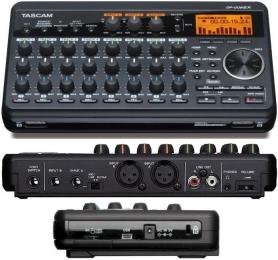
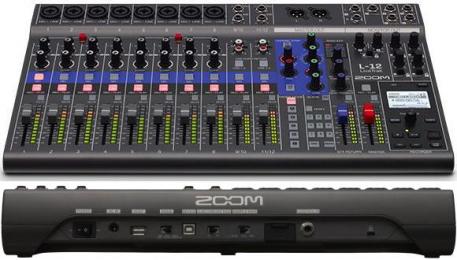
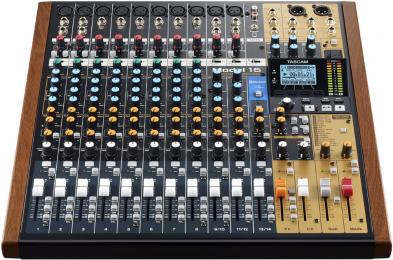
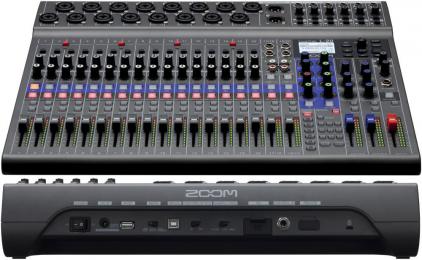
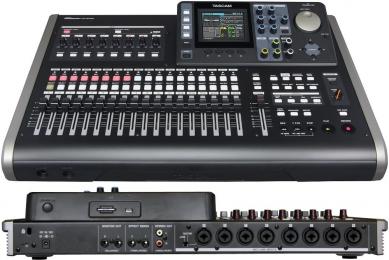
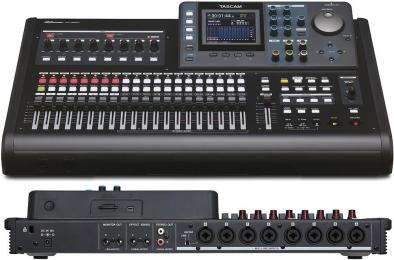
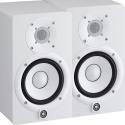
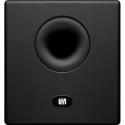


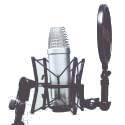
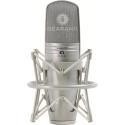
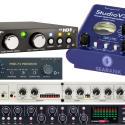
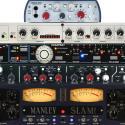
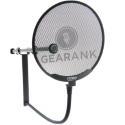
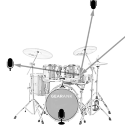
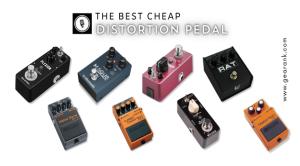
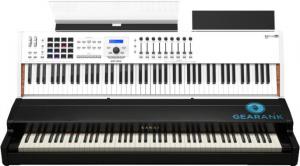
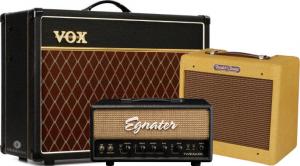
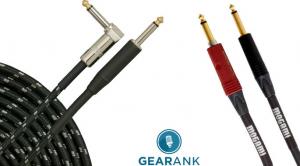
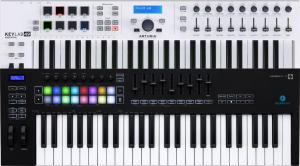
Comments
How do you export tracks from
Submitted by Gary (not verified) on
How do you export tracks from the TASCAM DP-32SD to a Mac?
Many thanks
Hi folks
Submitted by Jonesy - Wester... (not verified) on
Hi folks
I have had a ZOOM HD16 for over ten years - I can sync up my old MT200 sequencer for arranging a basic song. I'm old school and find at age 53 learning new methods isn't ideal - I would love it if a computer program could access all my midi gear from one program and I'm sure there's one out there, all of the tech sometimes gets in the way of just simply being creative ... but I guess companies still have to reinvent the wheel every so often - cheers everyone :)
they all have no midi clock,
Submitted by Stefaan Adriansens (not verified) on
they all have no midi clock, so useless to mé. it makes me angry that such great multitrack recorders came out last year and each time with no midi clock, which means 1 recording and never adding or building up a song. as a Lead Author & Researcher having no say on cons (master midi clock) I totally think you're a joke and doesn't even know how songs are made.
Some people play real
Submitted by Spite (not verified) on
Some people play real instruments
Some people play "real
Submitted by Anonymous (not verified) on
Some people play "real instruments" in addition to grooveboxes, synths with builtin sequencers and drumcomputers. To them it would be great if some of the multitrack recorders could send out MIDI clock.
This is basic functionality that should be expected from a modern multitrack recorder. Even in the 80s and 90s they synced digital MIDI devices with tape recorders. Having a device that does all that would be powerful and useful to many musicians, both professionals and amateurs.
I recently started recording
Submitted by Zeke (not verified) on
I recently started recording music again on my VS-2480 CD/DVD all in studio/recorder. I'm still so impressed with the unit. I updated the CD burner to DVD for large backups and I replaced the failing hard drive. I'm so impressed with this unit. I have it loaded with 4 effects cards. I have more effect options available per channel that I'll ever use. It has so much functionality and I never have to worry about latency, plug-ins, etc.
Just because it's been so many years, I thought there has to be something equivalent but newer. If I wanted to mix on a small screen, i could with the built in screen. but, I love the option to attach a big monitor. I also love the motorized faders. I can't believe nobody is making an equivalent (24 Tracks with xlr/1/4" inputs) unit with HDMI out.
Publication of our September
Submitted by Jason Horton on
Publication of our September 2022 Edition resulted in the following recorders coming off the recommended list:
i have been using a boss
Submitted by Brian Woolley (not verified) on
I have been using a boss br1200Cd for several years and it has now broken. Is there anything on the market comparable to this machine with guitar/bass effects, amp modelling etc etc and also has an inbuilt rhythm section that can do basic beats fills etc.
Try the zoom R24 it does all
Submitted by Shawn (not verified) on
Try the zoom R24 it does all those things independantly and doubles as a computer audio interface. Also much better effects than the Tascams.
Hi Brian,
Submitted by Raphael Pulgar on
Hi Brian,
Unfortunately, the only thing remotely similar to the Br1200CD is the Boss Micro BR BR-80 and its interface is not as extensive as the BR1200CD.
Majority of music producers have moved from all-in one products like the BR series to either a computer-based workflow with DAWs and MIDI Controllers or an analog workflow with separate drum machines and synthesizers.
Your best bet would to scour the used market for another BR1200CD but that would mean that if it inevitably breaks down again, you'll have to look for another one, possibly at an astronomical price or bad condition.
Adapting to new music production methods is still the way to go. It will take a lot of work but it's worth studying.
-Raphael
Publication of our August
Submitted by Jason Horton on
Publication of our August 2021 Edition resulted in the following recorder coming off the recommended list above:
Thanks for the information,
Submitted by Andrew (not verified) on
Thanks for the information, any comments on the DP-03SD
Hi Andrew,
Submitted by Raphael Pulgar on
Hi Andrew,
The DP-03SD is decent at best. Many users who gave it a high rating just wanted a simple recorder that does the job. However negative reviews note that the unit itself is unintuitive, the lack of an input db pad also turned off some users. The screen is also small and doesn't show all the information you need. For the price, there are better options. For just a little more, The Zoom Livetrak L-8 is a good pick.
Personally, I'd save up even more and get the Tascam Model 12. It's an amazing piece of kit that I had the pleasure of using a while back.
-Raphael
Are there any recorders that
Submitted by Eric (not verified) on
Are there any recorders that have an HDMI output for a monitor? Those tiny displays are so tough to see. I know some of the old Roland VS-2400s had a VGA output. Thanks.
Hi Eric,
Submitted by Raphael Pulgar on
Hi Eric,
To my knowledge, only the Tascam DR-701D Field recorder has an HDMI out that I've encountered. However, It is not a multitrack studio recorder. I'm afraid there aren't any other options in the market today.
-Raphael
On the DP-32SD & DP-24SD, do
Submitted by Mario (not verified) on
On the DP-32SD & DP-24SD, do they record both main out on separate channel like the ZOOM L12? thank
Hi Mario,
Submitted by Raphael Pulgar on
Hi Mario,
The DP-32SD and DP-24SD are both capable of rendering a stereo mixdown aside from individual multitracks. Tascam made an official video about this feature:
I hope it helps!
We've removed the following
Submitted by Jason Horton on
We've removed the following recorder from the recommended list above due to having been discontinued, however you can still read our analysis of it: Sound Devices MixPre-10M.
Thanks for the article. I
Submitted by Richard J. Sullivan (not verified) on
Thanks for the article. I would be interested to know about the drum programming that each one offers
The Zoom R24 has up to 6
Submitted by Trevor Brawn (not verified) on
The Zoom R24 has up to 6 phantom-powered inputs. The R24 page is still out-of-date in this respect. Also, I found the R24 (and presumably R16) preamps inadequate for distant acoustic sources, e.g. group of unamplified singers or room mic for a solo piano, even with condensers. After adding a FocusRite Scarlett into the gain chain, everything worked much better though.
As a result of our August
Submitted by Jason Horton on
As a result of our August 2019 update the following recorder came off our recommended list above, but you can still read our analysis of it: Zoom R24.
Why in the world would these
Submitted by Jesse (not verified) on
Why in the world would these companies start eliminating midi when most of the old AND new music devises do?
A deal breaker for many. The world is creeping more and more towards the insane Common sense is out the door!
It seems crazy to me that
Submitted by Bob (not verified) on
It seems crazy to me that what used to be standard features are no longer incorporated on the latest models, e.g. MIDI, mixing automation/scene memory, punch in/out footswitch.
We should be getter more features, not less.
The missing of Midi is a real
Submitted by Gerrit, Germany (not verified) on
The missing of Midi is a real hoax . Homerecording is the use of sequencers and Drummachines !
Maybe it will come back if the army of reissues of Vintage drumboxes and synths will enter the market ... Catched a Tascam dp24 Vers. 1.0 for me !
Just tried a Tascam 008.
Submitted by Peter A Bruce (not verified) on
Just tried a Tascam 008. Kinda quiet, no FX, unimpressive reverb. MY biggest problem: it displays time m/s/fr when i need Measure/beat, for accurate editing. Some ads don't specify. RRRRR!!!
Why no mention of Roland? Don
Submitted by Rick 'BlueRick... (not verified) on
Why no mention of Roland? Don't they compete in this market anymore. I have several that work pretty well.
Roland does still compete in
Submitted by Jason Horton on
Roland does still compete in this market under their Boss brand including the Boss BR BR-80 and the Boss BR-800.
They used to compete with the larger Tascam models with now discontinued recorders like the Roland VS-2000CD.
Does any one know of you can
Submitted by Dony Anders (not verified) on
Does any one know if you can use the r24 and the r16 together as a slave to the r24?
Yes..I have both and use the
Submitted by Curtis Johnson (not verified) on
Yes..I have both and use the R24 as the master...40 tracks and works great!
I have the Tascam DP-24 and
Submitted by Nash (not verified) on
I have the Tascam DP-24 and it's amazing after 20 years of Sonar on PC, these work flawlessly EVERY time I use it. Saves on crash.(Even saves last 10 undos after crash:)
Should mention the Roland. If anyone aver makes one with automation and automated faders(with memory after crash) that would be the perfect machine.
I tried using digital multi
Submitted by Robert Szymanski (not verified) on
I tried using digital multi track recorders.very frustrating to me and I wished 4 -8 track tape recorder make a comeback! Recording life was easier for me...
I'm a Huge Tascam fan - got
Submitted by bill (not verified) on
I'm a Huge Tascam fan - got lots of their products and recorders throughout the years. Currently using the 32sd primarily - nice unit. There are going to be some limitations due to price point, and that's ok. I still enjoy playing around with the old tape machines though.
You can synchronize two Zoom
Submitted by George Taus (not verified) on
You can synchronize two Zoom R16's via a simple USB cable for 32 tracks of playback and 16 tracks of simultaneous recording. The R16 can also run on batteries. No midi input or rhythm machine on the R16 was a deal breaker for me, at the time, and I ended up paying more for the older Zoom HD16 which had both.
Does the tascam dp32 sd have
Submitted by NURREDIN (not verified) on
Does the tascam dp32 sd have the capabilities of panning the stereo tracks to different locations in the mix?
Boss BR1600 is best of
Submitted by Vlado Bartolic (not verified) on
Boss BR1600 is best of
It was a good machine about
Submitted by Jason Horton on
It was a good machine about 14 years ago - still worth considering if you find one second hand for a good price, but it uses a built-in hard drive and CDRW drive rather than the SD cards that current ones use.
Great information here, I am
Submitted by Jessie (not verified) on
Great information here, I am glad I popped in to check things out. Am in the process of getting a multi track recorder, and for me, and me needs, the Zoom r16 is the one I will get for sure, thx again!!
I have a Zoom R24 and it's a
Submitted by Mark Ash (not verified) on
I have a Zoom R24 and it's a great bit of kit for the price. However I still feel I get better results from my Boss BR1600 which I prefer to use.
And yet none of those
Submitted by SEAN (not verified) on
And yet none of those recorders supports MIDI. You can't sync multiple passes from a drum machine or sequencer, etc. Deal breaker for some of us. :'(
No solution fills all the
Submitted by Lumpy McPhoomph (not verified) on
No solution fills all the requirements, but - I opted, last year, to purchase a used Yamaha AW-1600, and because I have a dedicated Studio PC (not connected to the internet)for mixing and mastering, I've bypassed some of those issues common to the stand-alone DAW. In addition, it features full midi sync-ing. Again, not perfect, but 'perfectly fine' for my needs...
I contacted a few of the
Submitted by Jason Horton on
I contacted a few of the manufactures to see if there were any undocumented features that might enable syncing - both Zoom and Tascam got back to me but external syncing isn't possible with their current recorders.
Tascam did point out that the original DP-24 and DP-32 had the ability to MIDI sync with external devices, but that was removed in the 24SD and 32SD models.
If you want to sync you'll either have to get one of those older Tascam models, or do what we did in the old days of tape machines where we'd record SMPTE time code on one of the tracks and sync via that - this is what my band used to do.
Here's an article explaining syncing with audio recordings using SMPTE: Getting Recording Devices In Sync: The Basics Of Timecode And Synchronization
I'm so furious about it, like
Submitted by Stefaan Adriansens (not verified) on
I'm so furious about it, like people that buy it and think, now I can make songs and all of them come to the conclusion that they can not because they have no master midi clock to sync their gear. like the timing is not important according to zoom and Tascam to make songs, that shows how less they know about producing songs. music is all about timing. especially in these times with all instruments having a midi clock. and if you contact them about it then they don't understand what a midi clock is, then the videos on youtube on how they try to make a song with it with no master clock, lol they are stuck with their own humm voice and flute and guitar. the cool thing about the dp32 and 24 is the mastering features, so the song is ready as soon it leaves the hardware. and Mr research puts them in them last place. completely noobish
There is a work-around for
Submitted by HDA (not verified) on
There is a work-around for MIDI sync on the Zoom R8 and Zoom R24 (not the Zoom R16) using a striped track for time code (the old fashioned way) on a 'hidden' output via one channel of the headphone socket. This is not the original article where I read about it, but it still covers the basic idea of how to do it.
http://www.henkybacker.com/2011...
Hi Deano, which is the best
Submitted by Ads (not verified) on
Hi Deano, which is the best device that is compatible with pro tools 12? Would have loved to have got the Zoom R16 but it doesn't work with Pro Tools.
Hi there I notice that the
Submitted by Deano (not verified) on
Hi there I notice that the Boss BR-800 Multitrack Digital Recording Studio is not mentioned in your review. Please can you provide me with the pros and cons....I thought it was a great bit of kit?
Hi Deano,
Submitted by Jason Horton on
Hi Deano,
The Boss BR-800 was included in our research but it didn't have high enough scores to be included in this guide when it was published.
It didn't miss by much so there is a chance it might be included when we next update this guide - in the meantime you can see its Gearank score in our Music Gear Database here.
Thanks Jason, it looks (as a
Submitted by Deano (not verified) on
Thanks Jason, it looks (as a layman) the easiest to use, I am a not sure what to buy as this is the 1st time Ive bought a recording device. Thanks for the link BTW.
The Tascam knobs and faders
Submitted by Music Teacher (not verified) on
The Tascam knobs and faders are from a material that after two years of use starts to fall apart. Bought a DR24SD in 2013 en after 3 years of use the rubber starts to like melt or crack away.
I do like the tascams alot,
Submitted by Vince (not verified) on
I do like the tascams alot, but i've had lots of issues with the buttons failing because little switches inside wear out fast.
really frustrating..
Hi, nice article. The Zoom
Submitted by Peter Strietman (not verified) on
Hi, nice article. The Zoom R16 is actually an 8in/2out usb audio interface (same as the R24),
Cheers
Pages